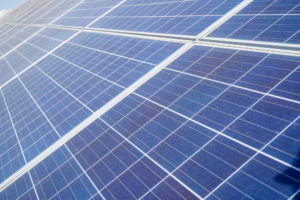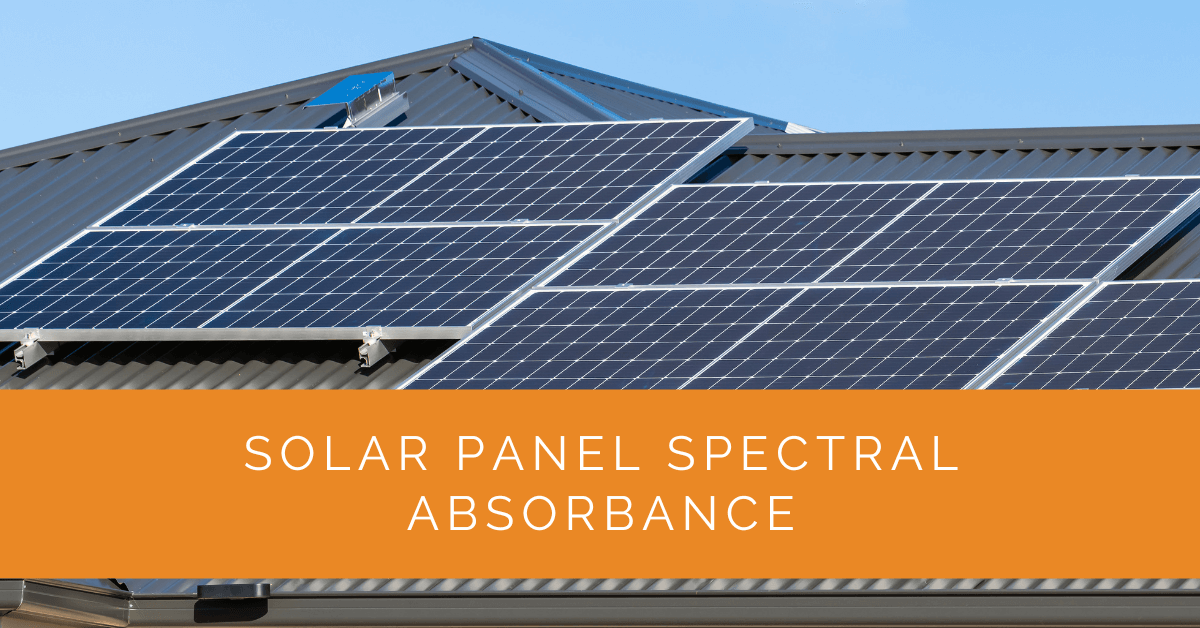Solar panels are widely recognized as a clean and sustainable source of energy. To maximize their efficiency, it is crucial to comprehend the way they absorb light from the sun’s spectrum. This detailed article will delve into the intricacies of solar panel spectral absorbance, wavelengths, and the various factors that can impact their performance.
Contents
- 1 Key Takeaways
- 2 The Solar Spectrum
- 3 Spectral Absorbance and Solar Cells
- 4 Optimizing Solar Panel Performance
- 5 Case Study: Enhancing Solar Panel Efficiency Through Spectral Absorbance Optimization
- 6 Expert Insights From Our Solar Panel Installers About Understanding Solar Panel Spectral Absorbance
- 7 Experience Solar Excellence with Us!
- 8 Conclusion
Key Takeaways
- Solar panels absorb light from various parts of the solar spectrum, including ultraviolet, visible, and infrared light, with different wavelengths impacting their efficiency.
- The band gap of semiconductor materials in solar cells determines which wavelengths of light can be effectively absorbed, with shorter wavelengths carrying more energy and being absorbed more efficiently.
- Factors like material properties, cell thickness, surface coatings, incident angle, and temperature are crucial in optimizing spectral absorbance and maximizing solar panel efficiency.
The Solar Spectrum
The solar spectrum is a vital starting point in our journey to comprehend spectral absorbance in solar panels. When sunlight reaches the Earth, it contains a wide range of wavelengths, from ultraviolet (UV) to visible light and beyond into the infrared and even longer wavelengths. These wavelengths represent different parts of the solar spectrum, each carrying varying amounts of energy.
Wavelength of Light in the Solar Spectrum
Understanding the wavelength of light is essential. Wavelength, often denoted as λ (lambda), measures the distance between two consecutive wave peaks. In the context of solar panels, we are primarily concerned with the range of wavelengths within the solar spectrum.
- Ultraviolet light has shorter wavelengths, typically below 400 nm.
- Visible light falls within the range of approximately 400 to 700 nm.
- Infrared light has longer wavelengths beyond 700 nm.
The absorption of different wavelengths plays a pivotal role in the performance of solar panels. As we delve deeper, we’ll uncover how solar cells interact with these distinct parts of the spectrum.

Spectral Absorbance and Solar Cells
Let’s explore how solar cells interact with the solar spectrum and absorb light to generate electricity.
How Do Solar Cells Absorb Light?
Solar cells, often made of semiconductor materials like silicon, have a critical property known as the “band gap.” This band gap determines which wavelengths of light the solar cell can absorb effectively. When photons, particles of light, strike the solar cell, they can be absorbed if their energy matches or exceeds the band gap energy.
- Shorter wavelengths, such as UV and blue light, carry higher energy photons. Silicon solar cells are efficient at absorbing these shorter wavelengths.
- Longer wavelengths, including infrared, carry lower energy photons and are less efficiently absorbed by silicon solar cells.
Let’s delve into the physics behind it to understand solar cells’ spectral absorbance better. When a photon with enough energy strikes a semiconductor solar cell, it can excite an electron from the valence band to the conduction band. This process generates an electron-hole pair, which can then contribute to the flow of electricity within the solar cell.
Factors Affecting Absorbance Efficiency
Several factors influence the efficiency of spectral absorbance in solar panels, affecting how effectively they convert sunlight into electricity. These factors are essential to optimize the performance of solar cells.
Material Properties
Different materials exhibit varying absorbance characteristics. For instance, gallium arsenide solar cells are highly efficient at shorter wavelengths, making them ideal for specific applications where high-efficiency solar panels are crucial.
Thickness of Solar Cell
The thickness of the solar cell affects its ability to absorb light. Thicker cells can absorb more photons but may also lead to greater losses due to recombination, a process where electron-hole pairs recombine, reducing the solar cell’s overall efficiency.
Surface Coatings
Surface coatings can be applied to solar cells to enhance absorbance, reduce reflection, and improve efficiency. These coatings maximize the amount of light the solar cell captures.
Incident Angle
The angle at which sunlight strikes the solar panel can impact absorbance. To address this, solar panels are often mounted on tracking systems that follow the sun’s position throughout the day, ensuring that sunlight strikes the panel at an optimal angle for maximum absorbance.
Temperature Effects
Solar panel temperature can affect efficiency. Lower temperatures generally result in better performance, as higher temperatures can lead to increased resistance within the solar cell and reduced efficiency.
![]()
Optimizing Solar Panel Performance
To optimize solar panel performance, it’s essential to consider the solar spectrum and the specific wavelengths of light that can be absorbed efficiently by the chosen material. This optimization ensures that the solar panel operates efficiently, producing more electricity from sunlight.
Solar panel manufacturers continually research and develop new materials and technologies to improve absorbance across the solar spectrum. Materials science and engineering innovations are helping create more efficient and cost-effective photovoltaic cells.
When considering spectral absorbance in solar panels, it’s crucial to recognize that the absorption process is not all or nothing. Different materials have varying degrees of absorbance at different wavelengths, and the combination of these absorbance profiles determines the solar cell’s overall efficiency.
Case Study: Enhancing Solar Panel Efficiency Through Spectral Absorbance Optimization
Background
We were approached by a residential client looking to install a solar PV system with the highest possible efficiency. The client was particularly interested in how advancements in spectral absorbance could enhance their system’s performance. Our goal was to design and install a system that leveraged the latest materials and technologies to optimize spectral absorbance and maximize energy output.
Project Overview
Our task was to implement a solar panel array that took full advantage of the solar spectrum. This involved selecting high-efficiency solar panels, applying advanced surface coatings, and optimizing the system’s orientation and tilt.
Implementation
- Material Selection: We chose monocrystalline solar panels known for their high efficiency in absorbing shorter wavelengths of the solar spectrum. These panels offered superior performance in capturing UV and visible light, crucial for maximizing energy output.
- Surface Coatings: To further enhance absorbance, we applied anti-reflective coatings to the solar panels. These coatings reduced reflection and increased the amount of light captured by the cells, boosting overall efficiency.
- Cell Thickness Optimization: We selected panels with an optimal cell thickness that balanced photon absorption with minimal recombination losses. This ensured that the cells could capture a maximum number of photons while maintaining high efficiency.
- Incident Angle Management: We installed the panels on a tracking system that adjusted their angle throughout the day. This system ensured that the panels maintained an optimal angle relative to the sun, maximizing their exposure to sunlight and improving absorbance.
- Temperature Management: We utilized materials and designs that mitigated the effects of temperature on the panels. This included installing panels with higher tolerance to temperature variations and ensuring adequate ventilation to dissipate heat.
Results
- Enhanced Energy Output: The optimized spectral absorbance resulted in a significant increase in the system’s energy output. The client reported a 20% improvement in energy generation compared to standard solar panels, translating to substantial energy savings.
- Cost Efficiency: The initial investment in high-efficiency panels and advanced coatings was quickly offset by the increased energy production. The client saw a return on investment within the first few years due to reduced energy costs and increased efficiency.
- Sustainability Impact: The optimized system contributed to a significant reduction in the client’s carbon footprint. By maximizing the use of the solar spectrum, the system generated more clean energy, supporting the client’s commitment to sustainability.
- Longevity and Performance: The use of high-quality materials and advanced technologies ensured the system’s durability and long-term performance. The panels continued to perform efficiently, with minimal degradation over time.
Summary
This case study highlights the importance of understanding and optimizing spectral absorbance in solar panel installations. By selecting the right materials, applying advanced surface coatings, and managing variables like cell thickness and incident angle, we significantly enhanced the system’s efficiency and performance. The result was a highly efficient, cost-effective, and sustainable solar PV system that maximized energy output and provided substantial savings for the client.
Expert Insights From Our Solar Panel Installers About Understanding Solar Panel Spectral Absorbance
Optimizing spectral absorbance is key to enhancing solar panel efficiency. By focusing on the right materials and coatings, we can significantly boost the energy output of PV systems.
Senior Solar Engineer
Understanding the impact of wavelength on solar cells allows us to design systems that maximize energy capture across the entire solar spectrum, ensuring clients get the most from their investment.
Solar Installation Specialist
Factors like cell thickness and incident angle are crucial in minimizing energy loss and maximizing absorption. Our installations are tailored to optimize these variables for peak performance.
Lead Solar Technician
Experience Solar Excellence with Us!
Trust in Solar Panels Network USA, where our seasoned experts deliver top-quality solar solutions for homes and businesses nationwide. With a legacy of countless successful installations and a commitment to sustainable energy, we’re your reliable partner in the solar journey. Ready for a brighter, eco-friendly future? Call us now at (855) 427-0058 and harness the power of the sun!
Conclusion
Understanding solar panel spectral absorbance is paramount in maximizing the efficiency of solar power generation. By comprehending the interplay between wavelengths, materials, and factors affecting absorbance, we can harness the full potential of the solar spectrum and contribute to a more sustainable future powered by clean and renewable energy.
As technology advances, we can expect even more efficient solar panels capable of capturing a broader range of the solar spectrum, ultimately making solar energy an increasingly vital part of our clean energy landscape. The intricate dance between photons, electrons, and materials in solar cells continues to drive innovation and shape the future of sustainable power generation.
About the Author
Solar Panels Network USA stands at the forefront of solar energy solutions, driven by a team of seasoned solar engineers and energy consultants. With over decades of experience in delivering high-quality solar installations and maintenance, we are committed to promoting sustainable energy through customer-centric, tailored solutions. Our articles reflect this commitment, crafted collaboratively by experts to provide accurate, up-to-date insights into solar technology, ensuring our readers are well-informed and empowered in their solar energy decisions.

